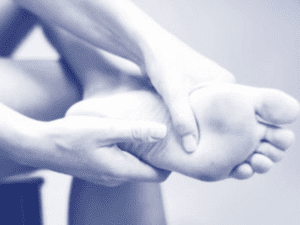Heel, Foot, and Ankle Pain: Your FAQs Answered
Heel, Foot, and Ankle Pain
Your FAQs about Heel, Foot, and Ankle Pain Answered
Welcome to this comprehensive guide addressing the most commonly asked questions about heel, foot, and ankle pain. We’ve got you covered whether you’re seeking clarity about the causes, differentiation, diagnosis, treatment options, or preventive measures for these lower limb discomforts. With this knowledge, you’ll be better equipped to make informed decisions about your health and well-being.
1. What Triggers Heel, Foot, and Ankle Pain?
Heel, foot, and ankle pain can emerge from diverse sources, including plantar fasciitis, Achilles tendinopathy, ankle sprains, fractures, and bunions. Factors contributing to these discomforts may involve improper footwear, overuse, structural irregularities, and underlying medical conditions.
2. How Does Heel Pain Differ from Foot and Ankle Pain?
While heel pain is often concentrated around the heel region, frequently linked to conditions like plantar fasciitis, foot pain can encompass a broader area. On the other hand, ankle pain primarily centres around the joint connecting the leg and foot.
3. How Do Medical Practitioners Diagnose Heel, Foot, and Ankle Pain?
Healthcare professionals adopt a comprehensive approach to diagnosis, involving physical examinations, a thorough review of your medical history, and potentially utilising imaging tests such as X-rays or MRI scans. These measures help uncover the underlying causes of discomfort.
4. Can Heel, Foot, and Ankle Pain Be Effectively Managed?
The management of pain is closely tied to its origin. Treatment options span a spectrum from rest, ice, and elevation to physiotherapy, orthotic devices, medications, and surgical interventions. The nature of the pain guides the most suitable approach.
5. When Should Professional Help Be Sought for Heel, Foot, or Ankle Pain?
If pain persists, is severe, or recurs, seeking medical guidance is wise, especially if accompanied by other worrying symptoms or impacting your mobility.
6. How Can Lifestyle Adjustments Alleviate These Symptoms?
Simple lifestyle changes such as wearing supportive footwear, maintaining a healthy weight, incorporating targeted stretching and strengthening exercises, and avoiding high-impact activities can significantly reduce discomfort.
7. Could Heel, Foot, or Ankle Pain Indicate Underlying Issues?
While often benign, these pains could signal more complex conditions like ankle arthritis, nerve compression, or circulatory problems. Swift evaluation ensures accurate diagnosis and personalised treatment.
8. Can You Prevent Heel, Foot, or Ankle Pain?
While complete prevention isn’t always possible, minimising risks is achievable by opting for appropriate footwear, practising good foot hygiene, avoiding abrupt activity changes, and staying attuned to your body’s signals.
Additional Queries About Foot and Ankle Health
1. How Does Foot and Ankle Alignment Impact Pain?
The alignment of your foot and ankle is pivotal in distributing weight and influencing pain development. Anomalies in alignment can contribute to discomfort in various lower limb areas.
2. Can Foot and Ankle Problems Cause Pain in Other Areas?
Indeed, foot and ankle issues have the potential to trigger pain that radiates to the knee, hip, or even the lower back. Addressing the root cause is critical to achieving lasting relief.
3. How Does the Body Maintain Foot and Ankle Balance?
Stability and coordination in the lower limb are an intricate interplay between sensory receptors in the feet, ankle joint proprioception, and input from the brain.
4. Why are Gait Analysis and Footwear Choice Important?
Gait analysis evaluates your walking pattern, identifying irregularities that might contribute to pain. Selecting suitable footwear based on your gait can alleviate stress on the foot and ankle.
5. Can Sedentary Lifestyle Influence Foot and Ankle Pain?
Certainly, a sedentary lifestyle can weaken muscles, hinder joint flexibility, and impair circulation, all of which can contribute to foot and ankle discomfort.
6. Are There Exercises to Enhance Foot and Ankle Function?
Exercise tailored to enhance strength, flexibility, and proprioception in the foot and ankle can be highly beneficial. Physiotherapists are adept at guiding you through personalised routines. See more: Balance Improvement Exercises.
7. Can Faulty Posture Contribute to Foot and Ankle Pain?
Absolutely, poor foot posture can disrupt overall body alignment, impacting the feet and ankles. Correcting foot posture can alleviate strain on these areas.
8. Do Age-Related Changes Affect Foot and Ankle Health?
As we age, joint wear and tear may lead to conditions like arthritis. Engaging in regular exercise, maintaining a healthy weight, and opting for supportive footwear can help mitigate age-related concerns.
FAQs About Ankle Sprains and Strains
1. What Are Ankle Sprains and Strains?
Ankle sprains involve stretched or torn ligaments, while strains concern stretched or torn muscles or tendons around the ankle joint. Both can arise from abrupt twists or overuse.
2. How Are Ankle Sprains and Strains Diagnosed and Treated?
Medical professionals gauge severity through physical exams and possibly imaging. Treatment involves a combination of rest, ice, compression, elevation, immobilisation, and rehabilitation exercises.
3. Can Ankle Sprains and Strains Recur?
Yes, improper healing and premature return to activity heighten re-injury risk. Proper recovery and rehabilitation are essential.
4. Can Ankle Injuries Lead to Chronic Issues?
Untreated or inadequately managed ankle injuries may result in long-term joint instability, chronic pain, or future instances of sprains and strains.
5. How Can Ankle Supportive Measures Aid Recovery?
Ankle braces, taping, and orthotics can provide additional stability during healing, reducing strain on the injured area.
Common Foot Pain Causes
Foot pain can stem from various factors, including injuries, tendon problems, degenerative conditions, and systemic diseases. Some common foot pain causes include foot injuries, plantar fasciitis, bunions, metatarsalgia, Morton’s neuroma, tendon injuries, bone injuries, degenerative conditions like arthritis, biomechanical issues, nerve-related sources such as tarsal tunnel syndrome, and muscle injuries.
Certain systemic conditions like fibromyalgia, lupus, rheumatoid arthritis, and psoriatic arthritis can also contribute to foot pain. This comprehensive list encompasses a wide range of foot pain causes, spanning different areas of the foot and various underlying conditions.
What Causes Heel Pain?
Heel pain commonly involves bone, fat pad, ligaments, tendons, or muscles.
1. Common Causes of Heel Pain
One of the primary culprits is plantar fasciitis, where inflammation of the main foot arch ligament leads to discomfort. Over time, this can lead to a heel spur, which develops due to delayed healing and excessive load through the injured soft tissue.
2. Other Sources of Heel Pain
Issues like Achilles tendinopathy, peroneal tendinopathy, and retrocalcaneal bursitis can also contribute to heel pain. Additionally, posterior impingement syndrome and heel arthritis can cause significant discomfort.
3. Contributing Factors
Factors such as abnormal walking style, obesity, ill-fitting shoes, or prolonged standing on hard surfaces can all contribute to heel pain. Certain health disorders like diabetes and arthritis may also play a role.
4. Who Suffers Heel Pain?
Heel pain is not discriminatory, affecting a wide range of individuals. Middle-aged men and women, active individuals involved in running sports, those carrying excess weight, children between 8 and 13 years (Sever’s disease), pregnant women, and individuals who stand for extended periods are at a higher risk.
For personalised advice or if you’re experiencing persistent pain, consulting a healthcare professional is crucial to address your unique circumstances.
Remember, this guide provides general information and awareness about heel, foot, and ankle pain. Always consult a healthcare professional for accurate diagnosis and tailored treatment options based on your needs.
Rochedale - Call 38410277
Book Online: RochedaleSalisbury - Call 32751044
Book Online: SalisburySandgate - Call 32691122
Book Online: SandgateSpecific Information
Heel Pain
Traumatic Ankle Ligament Injuries
Tendon Injuries
- Achilles Tendon Rupture
- Achilles Tendinopathy
- Achilles Enthesopathy
- FHL Tendinopathy
- Peroneal Tendinopathy
- Tibialis Posterior Tendinopathy
Foot Injuries
Bone Injuries
- Ankle Fracture (Broken Ankle)
- Stress Fracture
- Stress Fracture Feet
- Severs Disease
- Heel Spur
- Shin Splints




